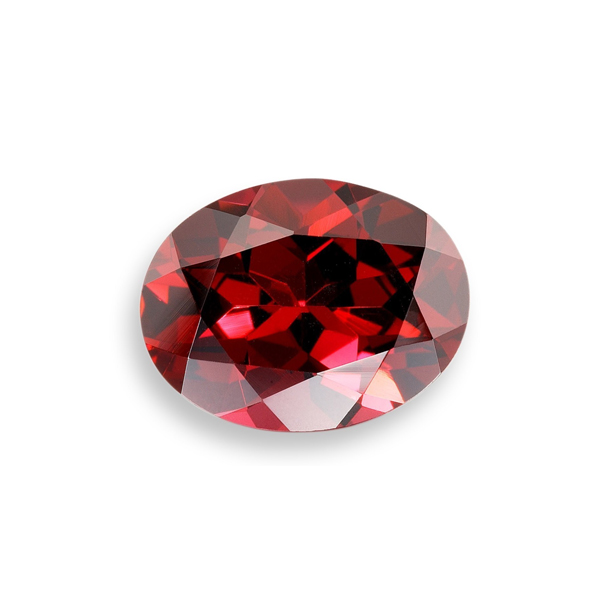Garnets are a group of silicates that have been used since the Bronze Age as a gemstone and abrasive. Their name comes from the Latin “granatum” and refers to the appearance and color of some of them, similar to the seeds of the fruit known as pomegranate. The chemistry of garnets is very complex:
- Color: Garnet comes in a variety of colors, including red, orange, yellow, green, purple, brown and black. The most common color is deep red, often associated with the pyrope and almandine varieties.
- Varieties: There are several types of garnet, each with its own color and characteristics:
- Almandine: Deep red to reddish-brown.
- Pyrope: Deep red to reddish-brown.
- Spessartine: Orange to reddish-brown.
- Grossular: Green (Tsavorite), yellow or brown.
- Andradite: Green (Demantoid), black, yellowish brown, gray, red, or yellow.
- Uvarovite: Emerald green in color.
- Hardness: Garnet is relatively hard, with a hardness ranging from 6.50 to 7.50 on the Mohs scale.
This makes it suitable for various types of jewelry, including rings, earrings, bracelets, and pendants . - Origin: Garnet is found in many places around the world, including Africa, Asia, Australia, Europe, and North America. Different sources can produce garnets with different colors and characteristics.
- Clarity: Garnet typically has good to excellent clarity; however, it can also be completely opaque. Stones with high transparency and intense color are highly valued.
- Cut: Garnet is commonly cut into various shapes, including round, oval, emerald, faceted, or cabochon cuts.
- Treatment: Garnet is generally not treated, as its color is natural and its clarity is highly desirable. However, some varieties can be subjected to heat treatment to improve color consistency.
- Value: The value of garnet depends on factors such as color, clarity, quality of cut, size and variety. Deep, intense colors with excellent transparency and a well-executed cut are highly valued.
** Check prices according to variety and size.








